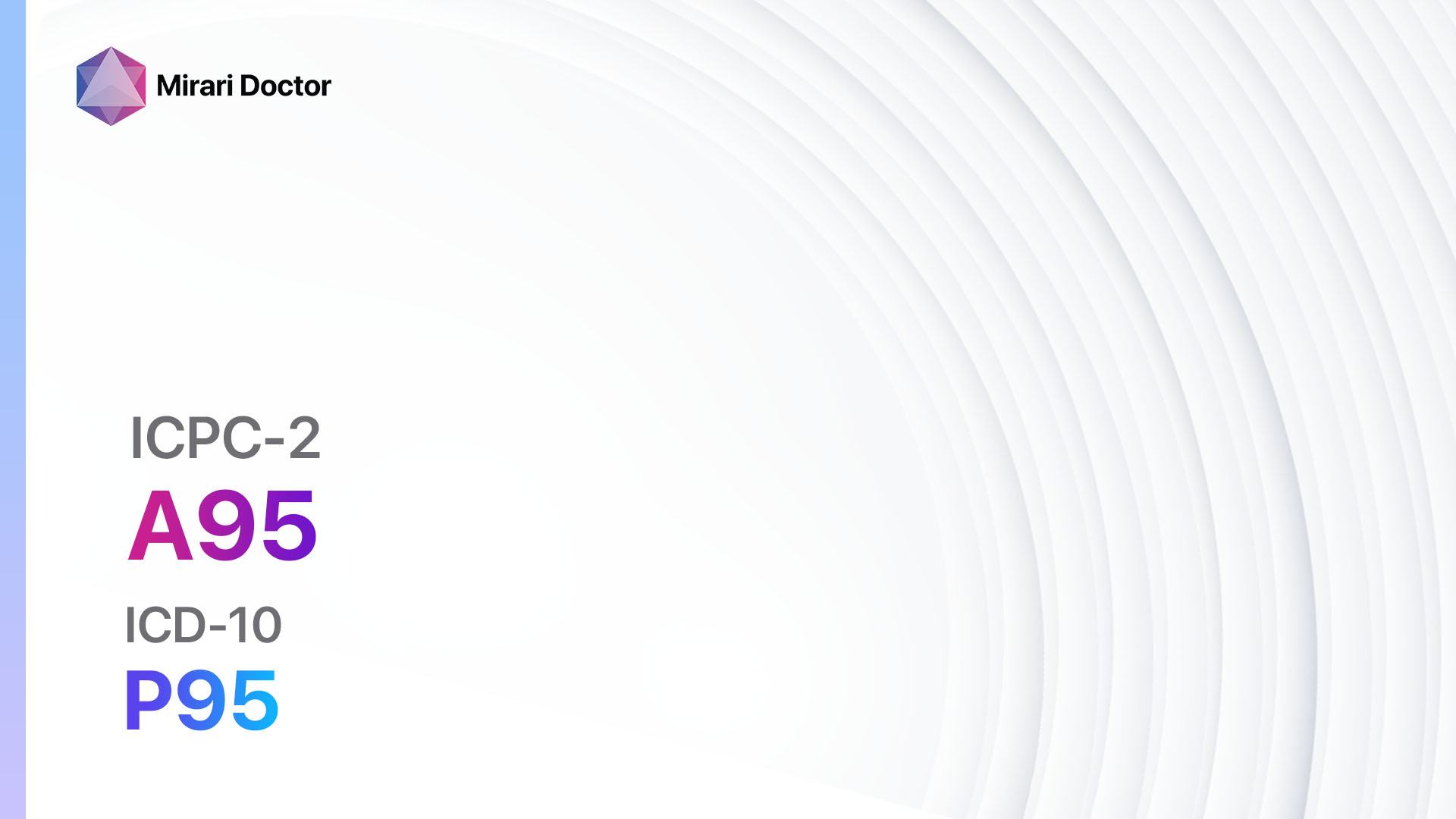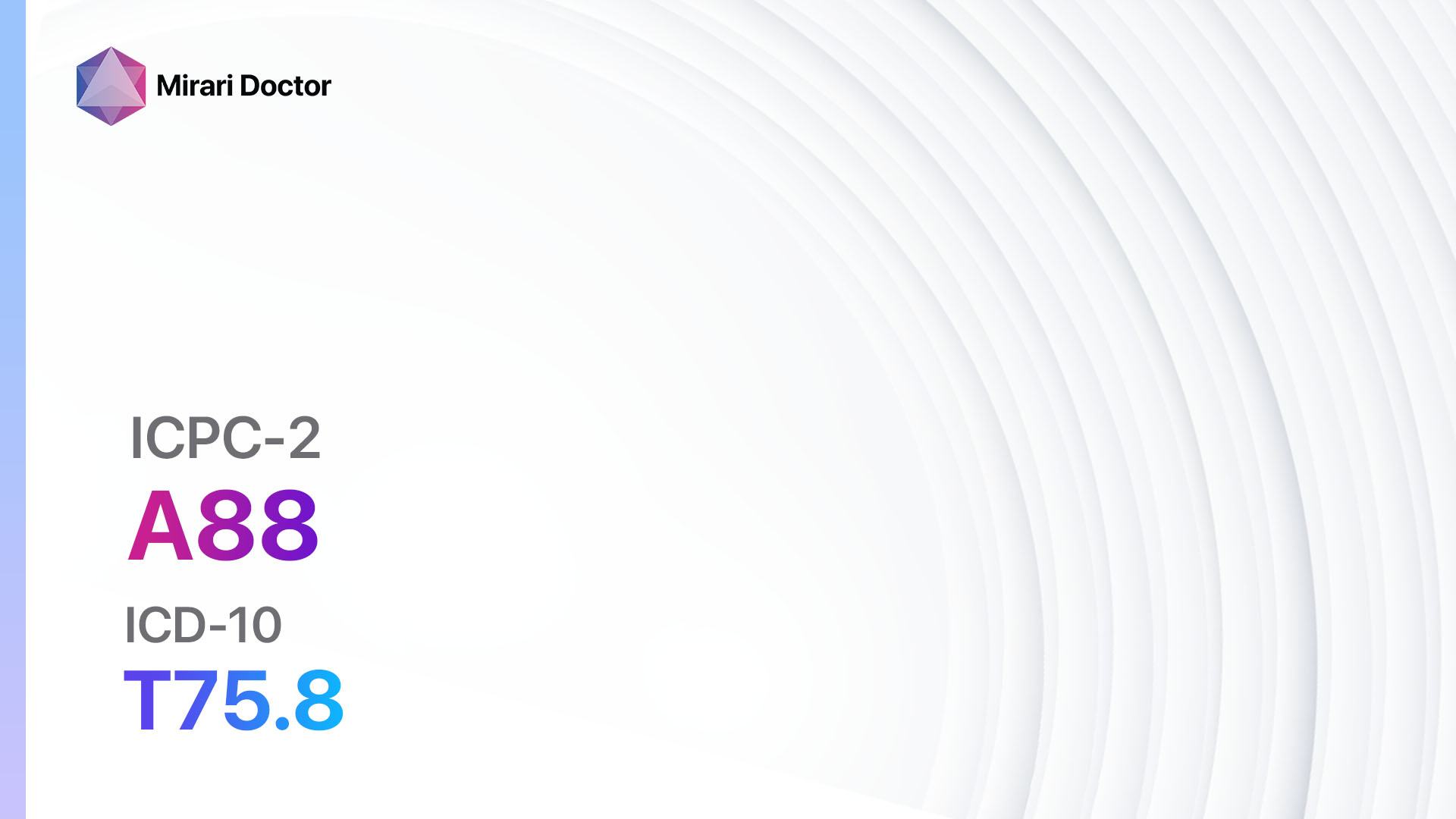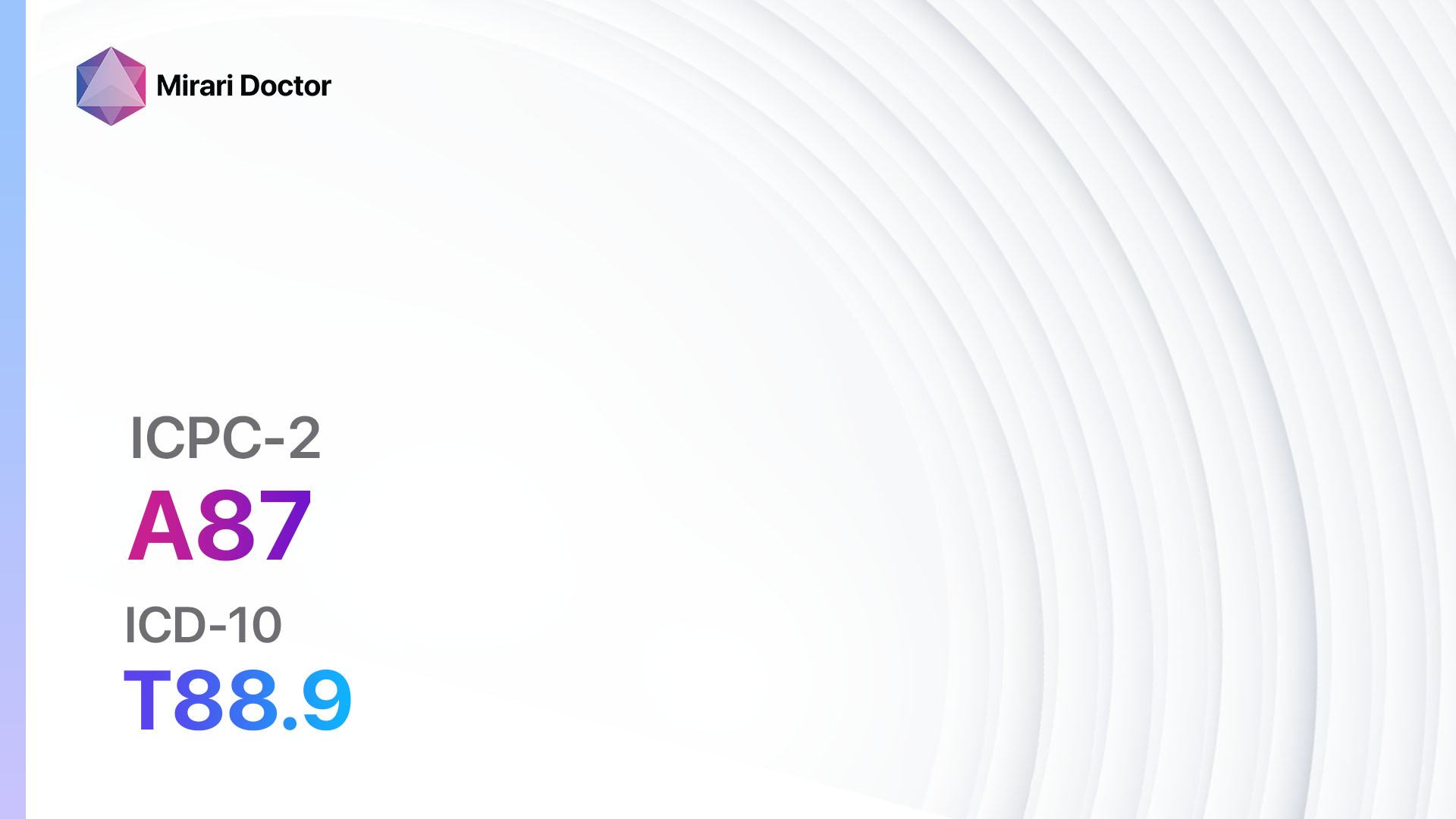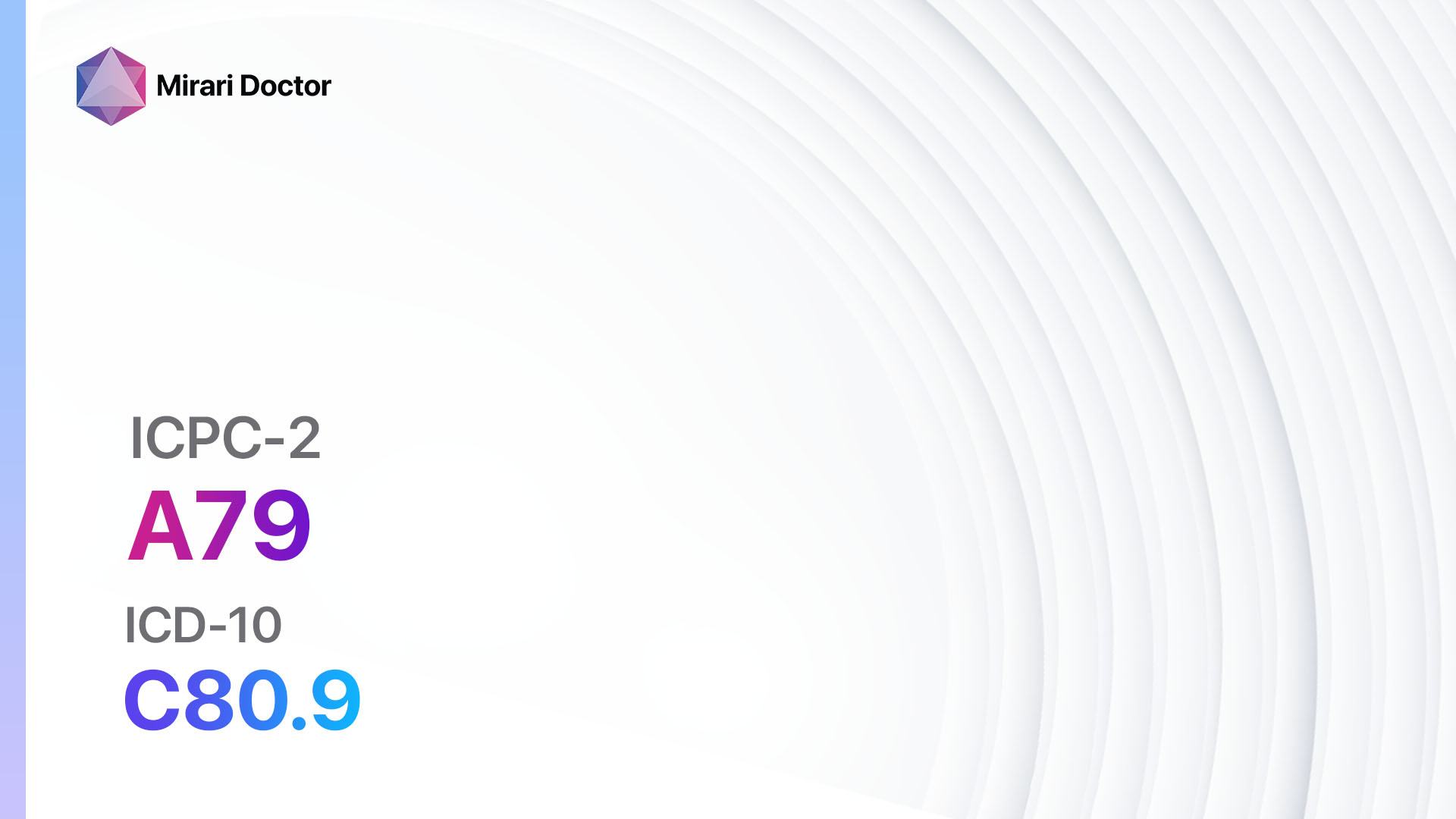
Introduction
Perinatal morbidity refers to any health condition or complication that occurs during pregnancy, childbirth, or the postpartum period[1]. Perinatal morbidity other (ICPC-2: A94) encompasses a range of conditions that may affect the mother or the baby[2]. This guide aims to provide healthcare professionals with a comprehensive understanding of perinatal morbidity other, including its symptoms, causes, diagnostic steps, possible interventions, and patient education.
Codes
- ICPC-2 Code: A94 Perinatal morbidity other[3]
- ICD-10 Code: P96.8 Other specified conditions originating in the perinatal period[4]
Symptoms
- Vaginal bleeding: Abnormal bleeding from the vagina during pregnancy or after childbirth[5].
- Abdominal pain: Persistent or severe pain in the abdominal region[6].
- Hypertension: High blood pressure during pregnancy[7].
- Edema: Swelling in the hands, feet, or face[8].
- Headache: Persistent or severe headaches[9].
- Changes in fetal movement: Decreased or increased fetal movement[10].
- Fever: Elevated body temperature.
Causes
- Placental abnormalities: Conditions that affect the placenta, such as placenta previa or placental abruption.
- Infections: Maternal infections, such as urinary tract infections or sexually transmitted infections, can lead to perinatal morbidity.
- Preterm labor: Onset of labor before 37 weeks of gestation.
- Gestational diabetes: High blood sugar levels during pregnancy.
- Hypertensive disorders: Conditions like preeclampsia or gestational hypertension.
- Fetal abnormalities: Structural or genetic abnormalities in the fetus.
- Maternal health conditions: Pre-existing medical conditions, such as diabetes or hypertension, can increase the risk of perinatal morbidity.
Diagnostic Steps
Medical History
- Gather information about the patient’s previous pregnancies, including any complications or perinatal morbidity.
- Ask about the patient’s medical history, including pre-existing conditions, previous surgeries, and current medications.
- Inquire about the patient’s lifestyle habits, such as smoking, alcohol consumption, or drug use.
- Assess the patient’s family history for any genetic or hereditary conditions.
Physical Examination
- Measure the patient’s blood pressure to check for hypertension.
- Examine the abdomen for signs of tenderness, swelling, or abnormal masses.
- Assess the patient’s overall appearance, including signs of distress or discomfort.
- Perform a pelvic examination to evaluate the cervix, uterus, and vaginal canal.
- Monitor fetal heart rate and assess fetal movement.
Laboratory Tests
- Complete blood count (CBC): To check for anemia or signs of infection.
- Urinalysis: To detect urinary tract infections or proteinuria.
- Blood glucose test: To screen for gestational diabetes.
- Liver function tests: To assess liver health and detect any abnormalities.
- Coagulation profile: To evaluate blood clotting function.
Diagnostic Imaging
- Ultrasound: To visualize the fetus, placenta, and amniotic fluid.
- Magnetic resonance imaging (MRI): To obtain detailed images of the pelvic region or fetal abnormalities.
- Doppler ultrasound: To assess blood flow in the umbilical cord or placenta.
- Fetal echocardiography: To evaluate the structure and function of the fetal heart.
Other Tests
- Non-stress test: Monitors fetal heart rate and movement to assess fetal well-being.
- Biophysical profile: Combines ultrasound and non-stress test to evaluate fetal well-being.
- Amniocentesis: Involves collecting a sample of amniotic fluid for genetic testing.
- Chorionic villus sampling (CVS): Involves collecting a sample of placental tissue for genetic testing.
- Genetic counseling: Provides information and guidance regarding genetic conditions or abnormalities.
Follow-up and Patient Education
- Schedule regular follow-up appointments to monitor the patient’s condition and assess fetal well-being.
- Educate the patient about the importance of prenatal care, healthy lifestyle habits, and self-monitoring of symptoms.
- Provide information about potential complications and when to seek immediate medical attention.
- Offer emotional support and counseling to address any concerns or anxieties.
Possible Interventions
Traditional Interventions
Medications:
Top 5 drugs for Perinatal morbidity other:
- Antibiotics (e.g., Amoxicillin, Azithromycin):
- Cost: Generic versions can be $3-$50/month.
- Contraindications: Allergy to antibiotics, liver disease.
- Side effects: Nausea, diarrhea, rash.
- Severe side effects: Severe allergic reactions, liver damage.
- Drug interactions: Warfarin, oral contraceptives.
- Warning: Finish the full course of antibiotics as prescribed.
- Antihypertensive medications (e.g., Methyldopa, Labetalol):
- Cost: Generic versions can be $10-$50/month.
- Contraindications: Allergy to antihypertensive medications, severe liver disease.
- Side effects: Fatigue, dizziness, headache.
- Severe side effects: Severe hypotension, bradycardia.
- Drug interactions: Nonsteroidal anti-inflammatory drugs (NSAIDs), other antihypertensive medications.
- Warning: Regular blood pressure monitoring is required.
- Anticoagulants (e.g., Heparin, Enoxaparin):
- Cost: Varies depending on the specific medication.
- Contraindications: Active bleeding, history of heparin-induced thrombocytopenia.
- Side effects: Bruising, bleeding at injection site.
- Severe side effects: Severe bleeding, allergic reactions.
- Drug interactions: NSAIDs, other anticoagulant medications.
- Warning: Regular monitoring of blood clotting parameters is required.
- Corticosteroids (e.g., Betamethasone, Dexamethasone):
- Cost: Generic versions can be $10-$50/month.
- Contraindications: Active infections, uncontrolled diabetes.
- Side effects: Increased appetite, weight gain, mood changes.
- Severe side effects: Adrenal suppression, osteoporosis.
- Drug interactions: Nonsteroidal anti-inflammatory drugs (NSAIDs), certain antifungal medications.
- Warning: Gradual tapering of corticosteroid dose is required.
- Antidepressants (e.g., Sertraline, Escitalopram):
- Cost: Generic versions can be $10-$50/month.
- Contraindications: Allergy to antidepressants, recent use of monoamine oxidase inhibitors (MAOIs).
- Side effects: Nausea, headache, insomnia.
- Severe side effects: Suicidal thoughts, serotonin syndrome.
- Drug interactions: MAOIs, certain migraine medications.
- Warning: Regular monitoring for changes in mood or behavior is required.
Alternative Drugs:
- Antifungal medications (e.g., Fluconazole): Used to treat fungal infections.
- Antiviral medications (e.g., Acyclovir): Used to treat viral infections.
- Iron supplements: Used to treat iron deficiency anemia.
- Progesterone: May be prescribed to prevent preterm labor.
- Intravenous immunoglobulin (IVIG): Used in certain cases of immune-mediated perinatal morbidity.
Surgical Procedures:
- Cesarean section: Surgical delivery of the baby through an incision in the abdomen and uterus. Cost: $15,000 to $50,000.
- Cervical cerclage: Placement of a stitch around the cervix to prevent preterm labor. Cost: $5,000 to $10,000.
- Dilation and curettage (D&C): Surgical procedure to remove tissue from the uterus. Cost: $3,000 to $6,000.
- Hysterectomy: Surgical removal of the uterus. Cost: $10,000 to $20,000.
- Blood transfusion: Transfusion of blood or blood products to treat severe anemia or hemorrhage. Cost: $1,000 to $5,000.
Alternative Interventions
- Acupuncture: May help alleviate pain, reduce stress, and promote relaxation. Cost: $60-$120 per session.
- Chiropractic care: Can help with musculoskeletal pain and promote overall well-being. Cost: $50-$200 per session.
- Herbal supplements: Some herbal remedies, such as raspberry leaf tea or ginger, may have potential benefits during pregnancy. Cost: Varies depending on the specific supplement.
- Massage therapy: Can help relieve muscle tension, improve circulation, and reduce stress. Cost: $50-$150 per session.
- Yoga and meditation: May promote relaxation, improve flexibility, and reduce anxiety. Cost: $10-$20 per class.
Lifestyle Interventions
- Healthy diet: Encourage a balanced diet rich in fruits, vegetables, whole grains, and lean proteins. Cost: Varies depending on food choices.
- Regular exercise: Recommend moderate-intensity exercise, such as walking or swimming, with the approval of a healthcare provider. Cost: Varies depending on the chosen activity.
- Adequate rest and sleep: Emphasize the importance of getting enough rest and sleep during pregnancy. Cost: None.
- Stress management: Provide techniques for stress reduction, such as deep breathing exercises or mindfulness practices. Cost: None.
- Avoidance of harmful substances: Advise against smoking, alcohol consumption, and illicit drug use. Cost: None.
It is important to note that the cost ranges provided are approximate and may vary depending on the location and availability of the interventions. Healthcare professionals should consider the individual patient’s needs, preferences, and financial situation when recommending interventions.
Conclusion
This clinical procedural guide provides healthcare professionals with a comprehensive overview of perinatal morbidity other (ICPC-2: A94). By understanding the symptoms, causes, diagnostic steps, and possible interventions, healthcare professionals can effectively diagnose and manage perinatal morbidity in their patients. It is crucial to provide appropriate follow-up care and patient education to ensure the best possible outcomes for both the mother and the baby.
Mirari Cold Plasma Alternative Intervention
Understanding Mirari Cold Plasma
- Safe and Non-Invasive Treatment: Mirari Cold Plasma is a safe and non-invasive treatment option for various skin conditions. It does not require incisions, minimizing the risk of scarring, bleeding, or tissue damage.
- Efficient Extraction of Foreign Bodies: Mirari Cold Plasma facilitates the removal of foreign bodies from the skin by degrading and dissociating organic matter, allowing easier access and extraction.
- Pain Reduction and Comfort: Mirari Cold Plasma has a local analgesic effect, providing pain relief during the treatment, making it more comfortable for the patient.
- Reduced Risk of Infection: Mirari Cold Plasma has antimicrobial properties, effectively killing bacteria and reducing the risk of infection.
- Accelerated Healing and Minimal Scarring: Mirari Cold Plasma stimulates wound healing and tissue regeneration, reducing healing time and minimizing the formation of scars.
Mirari Cold Plasma Prescription
Video instructions for using Mirari Cold Plasma Device – A94 Perinatal morbidity other (ICD-10:P96.8)
| Mild | Moderate | Severe |
| Mode setting: 1 (Infection) Location: 0 (Localized) Morning: 15 minutes, Evening: 15 minutes | Mode setting: 1 (Infection) Location: 0 (Localized) Morning: 30 minutes, Lunch: 30 minutes, Evening: 30 minutes | Mode setting: 1 (Infection) Location: 0 (Localized) Morning: 30 minutes, Lunch: 30 minutes, Evening: 30 minutes |
| Mode setting: 2 (Wound Healing) Location: 7 (Neuro system & ENT) Morning: 15 minutes, Evening: 15 minutes | Mode setting: 2 (Wound Healing) Location: 7 (Neuro system & ENT) Morning: 30 minutes, Lunch: 30 minutes, Evening: 30 minutes | Mode setting: 2 (Wound Healing) Location: 7 (Neuro system & ENT) Morning: 30 minutes, Lunch: 30 minutes, Evening: 30 minutes |
| Mode setting: 7 (Immunotherapy) Location: 1 (Sacrum) Morning: 15 minutes, Evening: 15 minutes | Mode setting: 7 (Immunotherapy) Location: 1 (Sacrum) Morning: 30 minutes, Lunch: 30 minutes, Evening: 30 minutes | Mode setting: 7 (Immunotherapy) Location: 1 (Sacrum) Morning: 30 minutes, Lunch: 30 minutes, Evening: 30 minutes |
| Total Morning: 45 minutes approx. $7.50 USD, Evening: 45 minutes approx. $7.50 USD | Total Morning: 90 minutes approx. $15 USD, Lunch: 90 minutes approx. $15 USD, Evening: 90 minutes approx. $15 USD, | Total Morning: 90 minutes approx. $15 USD, Lunch: 90 minutes approx. $15 USD, Evening: 90 minutes approx. $15 USD, |
| Usual treatment for 7-60 days approx. $105 USD – $900 USD | Usual treatment for 6-8 weeks approx. $1,890USD – $2,520 USD | Usual treatment for 3-6 months approx. $4,050 USD – $8,100 USD |
 |
|
Use the Mirari Cold Plasma device to treat Perinatal morbidity other effectively.
WARNING: MIRARI COLD PLASMA IS DESIGNED FOR THE HUMAN BODY WITHOUT ANY ARTIFICIAL OR THIRD PARTY PRODUCTS. USE OF OTHER PRODUCTS IN COMBINATION WITH MIRARI COLD PLASMA MAY CAUSE UNPREDICTABLE EFFECTS, HARM OR INJURY. PLEASE CONSULT A MEDICAL PROFESSIONAL BEFORE COMBINING ANY OTHER PRODUCTS WITH USE OF MIRARI.
Step 1: Cleanse the Skin
- Start by cleaning the affected area of the skin with a gentle cleanser or mild soap and water. Gently pat the area dry with a clean towel.
Step 2: Prepare the Mirari Cold Plasma device
- Ensure that the Mirari Cold Plasma device is fully charged or has fresh batteries as per the manufacturer’s instructions. Make sure the device is clean and in good working condition.
- Switch on the Mirari device using the power button or by following the specific instructions provided with the device.
- Some Mirari devices may have adjustable settings for intensity or treatment duration. Follow the manufacturer’s instructions to select the appropriate settings based on your needs and the recommended guidelines.
Step 3: Apply the Device
- Place the Mirari device in direct contact with the affected area of the skin. Gently glide or hold the device over the skin surface, ensuring even coverage of the area experiencing.
- Slowly move the Mirari device in a circular motion or follow a specific pattern as indicated in the user manual. This helps ensure thorough treatment coverage.
Step 4: Monitor and Assess:
- Keep track of your progress and evaluate the effectiveness of the Mirari device in managing your Perinatal morbidity other. If you have any concerns or notice any adverse reactions, consult with your health care professional.
Note
This guide is for informational purposes only and should not replace the advice of a medical professional. Always consult with your healthcare provider or a qualified medical professional for personal advice, diagnosis, or treatment. Do not solely rely on the information presented here for decisions about your health. Use of this information is at your own risk. The authors of this guide, nor any associated entities or platforms, are not responsible for any potential adverse effects or outcomes based on the content.
Mirari Cold Plasma System Disclaimer
- Purpose: The Mirari Cold Plasma System is a Class 2 medical device designed for use by trained healthcare professionals. It is registered for use in Thailand and Vietnam. It is not intended for use outside of these locations.
- Informational Use: The content and information provided with the device are for educational and informational purposes only. They are not a substitute for professional medical advice or care.
- Variable Outcomes: While the device is approved for specific uses, individual outcomes can differ. We do not assert or guarantee specific medical outcomes.
- Consultation: Prior to utilizing the device or making decisions based on its content, it is essential to consult with a Certified Mirari Tele-Therapist and your medical healthcare provider regarding specific protocols.
- Liability: By using this device, users are acknowledging and accepting all potential risks. Neither the manufacturer nor the distributor will be held accountable for any adverse reactions, injuries, or damages stemming from its use.
- Geographical Availability: This device has received approval for designated purposes by the Thai and Vietnam FDA. As of now, outside of Thailand and Vietnam, the Mirari Cold Plasma System is not available for purchase or use.
References
- World Health Organization. (2016). Maternal and perinatal health. Retrieved from//www.who.int/maternal_child_adolescent/topics/maternal/maternal_perinatal/en/
- Dulay, A. T. (2021). Maternal Mortality and Perinatal Mortality. Merck Manual Professional Version. Retrieved from//www.merckmanuals.com/professional/gynecology-and-obstetrics/abnormalities-of-pregnancy/maternal-mortality-and-perinatal-mortality
- World Organization of Family Doctors. (2016). ICPC-2: International Classification of Primary Care (2nd ed.). Oxford University Press.
- World Health Organization. (2019). International Statistical Classification of Diseases and Related Health Problems (11th ed.). Retrieved from//icd.who.int/browse11/l-m/en
- American College of Obstetricians and Gynecologists. (2018). Bleeding During Pregnancy. Retrieved from//www.acog.org/womens-health/faqs/bleeding-during-pregnancy
- Zachariah, S. K., & Fonseca, M. (2020). Acute Abdomen and Abdominal Pain in Pregnancy. StatPearls. Retrieved from//www.ncbi.nlm.nih.gov/books/NBK551612/
- American College of Obstetricians and Gynecologists. (2019). Gestational Hypertension and Preeclampsia. Retrieved from//www.acog.org/clinical/clinical-guidance/practice-bulletin/articles/2020/06/gestational-hypertension-and-preeclampsia
- Ely, D. M., & Driscoll, A. K. (2019). Infant Mortality in the United States, 2017: Data From the Period Linked Birth/Infant Death File. National Vital Statistics Reports, 68(10), 1-20.
- Negro, A., Delaruelle, Z., Ivanova, T. A., Khan, S., Ornello, R., Raffaelli, B., … & European Headache Federation School of Advanced Studies (EHF-SAS). (2017). Headache and pregnancy: a systematic review. The Journal of Headache and Pain, 18(1), 1-20.
- Heazell, A. E., Budd, J., Li, M., Cronin, R., Bradford, B., McCowan, L. M., … & Flenady, V. (2018). Alterations in maternally perceived fetal movement and their association with late stillbirth: findings from the Midland and North of England stillbirth case–control study. BMJ Open, 8(7), e020031.
Related articles
Made in USA



























